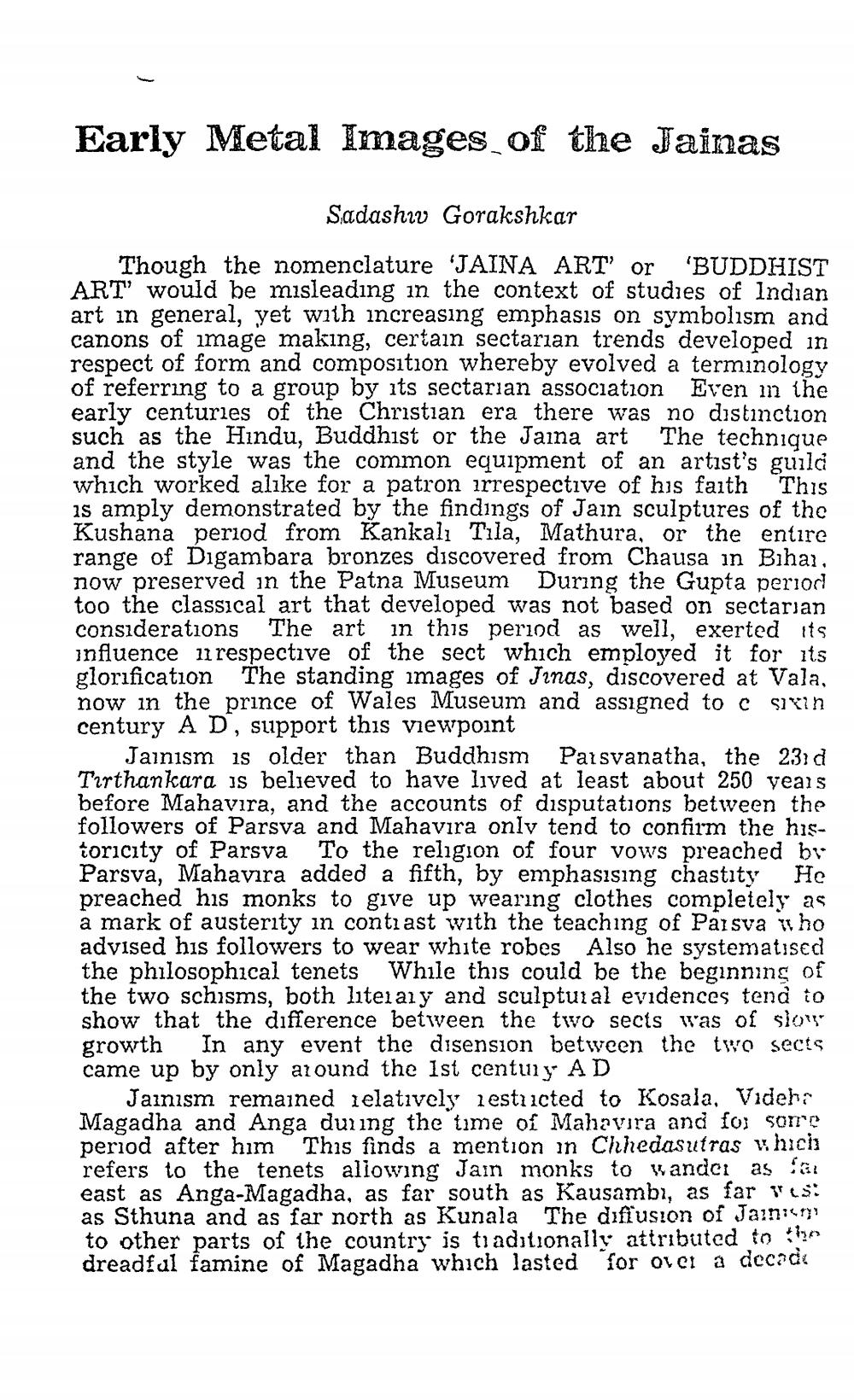________________
Early Metal Images of the Jainas
Sadashiv Gorakshkar
Though the nomenclature 'JAINA ART' or 'BUDDHIST ART' would be misleading in the context of studies of Indian art in general, yet with increasing emphasis on symbolism and canons of image making, certain sectarian trends developed in respect of form and composition whereby evolved a terminology of referring to a group by its sectarian association Even in the early centuries of the Christian era there was no distinction such as the Hindu, Buddhist or the Jaina art The technique and the style was the common equipment of an artist's guild which worked alike for a patron irrespective of his faith This is amply demonstrated by the findings of Jain sculptures of the Kushana period from Kankalı Tila, Mathura, or the entire range of Digambara bronzes discovered from Chausa in Bihar. now preserved in the Patna Museum During the Gupta period too the classical art that developed was not based on sectarian considerations The art in this period as well, exerted its influence respective of the sect which employed it for its glorification The standing images of Jinas, discovered at Vala, now in the prince of Wales Museum and assigned to c Sixin century AD, support this viewpoint
He
Jainism is older than Buddhism Paisvanatha, the 231d Tirthankara is believed to have lived at least about 250 years before Mahavira, and the accounts of disputations between the followers of Parsva and Mahavira only tend to confirm the historicity of Parsva To the religion of four vows preached by Parsva, Mahavira added a fifth, by emphasising chastity preached his monks to give up wearing clothes completely as a mark of austerity in contrast with the teaching of Parsva who advised his followers to wear white robes Also he systematised the philosophical tenets While this could be the beginning of the two schisms, both literary and sculptural evidences tend to show that the difference between the two sects was of slow growth In any event the disension between the two sects came up by only around the 1st century AD
Jainism remained relatively restricted to Kosala, Videbr Magadha and Anga during the time of Mahavira and for some period after him This finds a mention in Chhedasutras which refers to the tenets allowing Jain monks to wander as far east as Anga-Magadha, as far south as Kausambi, as far vest as Sthuna and as far north as Kunala The diffusion of Jainism to other parts of the country is traditionally attributed to the dreadful famine of Magadha which lasted for over a decad




